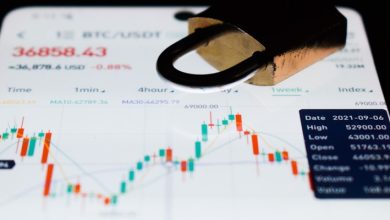Understanding and Using Crypto Derivatives

- What are Crypto Derivatives?
- Benefits of Using Crypto Derivatives
- Risks Associated with Crypto Derivatives
- How to Trade Crypto Derivatives Safely
- Regulatory Environment for Crypto Derivatives
- Advanced Strategies for Using Crypto Derivatives
What are Crypto Derivatives?
Cryptocurrency derivatives are financial contracts that derive their value from an underlying cryptocurrency asset. These derivatives can be used for various purposes, such as hedging against price fluctuations, speculating on price movements, or gaining exposure to the cryptocurrency market without actually owning the underlying asset.
One common type of cryptocurrency derivative is a futures contract, which is an agreement to buy or sell a specific amount of a cryptocurrency at a predetermined price at a specified time in the future. Another type of derivative is an options contract, which gives the holder the right, but not the obligation, to buy or sell a cryptocurrency at a specific price within a certain timeframe.
By using cryptocurrency derivatives, traders and investors can manage risk, increase leverage, and access new trading opportunities in the cryptocurrency market. However, it is important to note that derivatives trading can be complex and risky, so it is essential to have a good understanding of the market and the products being traded.
Overall, cryptocurrency derivatives play a significant role in the cryptocurrency market, providing liquidity, price discovery, and risk management tools for market participants. As the cryptocurrency market continues to evolve and grow, the use of derivatives is likely to become even more widespread and important for both institutional and retail investors.
Benefits of Using Crypto Derivatives
Crypto derivatives offer a range of benefits for traders looking to diversify their portfolios and manage risk effectively.
- Leverage: One of the main advantages of using crypto derivatives is the ability to trade with leverage, allowing traders to control larger positions with a smaller amount of capital. This can amplify profits, but it is important to note that it also increases the potential for losses.
- Hedging: Crypto derivatives can be used as a hedging tool to protect against market volatility. By taking a position that offsets potential losses in another part of the portfolio, traders can mitigate risk and ensure more stable returns.
- Market Efficiency: Derivatives help improve market efficiency by allowing traders to speculate on price movements without actually owning the underlying asset. This can lead to increased liquidity and price discovery in the market.
- Diversification: By trading crypto derivatives, investors can gain exposure to a wide range of assets without the need to purchase and store them. This diversification can help spread risk and potentially increase returns.
- 24/7 Trading: Crypto derivatives markets operate 24/7, providing traders with the flexibility to trade at any time of day. This constant availability can be advantageous for those looking to take advantage of global market movements.
Overall, the benefits of using crypto derivatives include increased leverage, the ability to hedge against risk, improved market efficiency, diversification opportunities, and access to round-the-clock trading. Traders should carefully consider these advantages when deciding whether to incorporate derivatives into their investment strategies.
Risks Associated with Crypto Derivatives
The use of crypto derivatives comes with a variety of risks that investors should be aware of before getting involved in these financial instruments. Some of the main risks associated with crypto derivatives include:
- Volatility Risk: The crypto market is known for its high levels of volatility, which can lead to significant price swings in cryptocurrencies. This can result in investors experiencing large losses when trading crypto derivatives.
- Liquidity Risk: Some crypto derivatives may have low levels of liquidity, making it difficult to buy or sell positions at desired prices. This lack of liquidity can lead to slippage and increased trading costs for investors.
- Counterparty Risk: When trading crypto derivatives, investors are exposed to counterparty risk – the risk that the other party in the trade will not fulfill their obligations. This can result in investors losing their capital if the counterparty defaults.
- Regulatory Risk: The regulatory environment surrounding cryptocurrencies and crypto derivatives is constantly evolving. Changes in regulations could impact the legality of trading crypto derivatives or increase compliance costs for investors.
- Technology Risk: Crypto derivatives rely on technology infrastructure to facilitate trading. Issues such as cybersecurity breaches or technology failures could disrupt trading and result in losses for investors.
It is important for investors to carefully consider these risks before engaging in crypto derivatives trading. By understanding and managing these risks effectively, investors can make informed decisions and potentially reduce the impact of these risks on their investment portfolios.
How to Trade Crypto Derivatives Safely
When it comes to trading crypto derivatives, it is crucial to prioritize safety and security. Here are some tips to help you trade crypto derivatives safely:
- Choose a reputable exchange: Look for an exchange that has a solid reputation and a track record of security. Make sure the exchange has proper security measures in place to protect your funds.
- Use two-factor authentication: Enable two-factor authentication on your trading account to add an extra layer of security. This will help prevent unauthorized access to your account.
- Do your research: Before trading any crypto derivatives, make sure you understand how they work and the risks involved. Take the time to educate yourself on different crypto derivatives and how they can impact your investment.
- Start small: When you first start trading crypto derivatives, it’s best to start with a small investment. This will help you gain experience without risking a significant amount of money.
- Set stop-loss orders: To protect your investment, consider setting stop-loss orders. This will automatically sell your crypto derivatives if they reach a certain price, helping you minimize potential losses.
By following these tips, you can trade crypto derivatives safely and securely. Remember to always prioritize safety when engaging in crypto derivative trading to protect your investments.
Regulatory Environment for Crypto Derivatives
The regulatory environment surrounding crypto derivatives plays a crucial role in shaping the market and ensuring investor protection. It is essential for traders and investors to understand the regulations in place when using these financial instruments.
In many countries, the regulatory framework for crypto derivatives is still evolving, with different jurisdictions taking varying approaches to oversight and enforcement. Some regulators have taken a cautious stance, while others have embraced innovation and sought to create a more favorable environment for these products.
Regulatory bodies such as the Commodity Futures Trading Commission (CFTC) in the United States and the Financial Conduct Authority (FCA) in the United Kingdom have started to provide clearer guidelines for the trading of crypto derivatives. These guidelines cover aspects such as registration requirements, risk management, and disclosure obligations for market participants.
It is important for traders to be aware of these regulations and ensure compliance to avoid potential legal issues. By understanding the regulatory environment, traders can make more informed decisions and mitigate risks associated with trading crypto derivatives. Additionally, staying updated on regulatory developments can help traders adapt to changes in the market and take advantage of new opportunities that arise.
Overall, the regulatory environment for crypto derivatives is still evolving, and it is essential for traders to stay informed and compliant with the latest guidelines to operate in a safe and secure manner. By following regulatory requirements and best practices, traders can help promote a healthy and sustainable market for crypto derivatives.
Advanced Strategies for Using Crypto Derivatives
When it comes to utilizing crypto derivatives, employing advanced strategies can significantly enhance your trading success. Here are some key tactics to consider:
- **Leveraging:** Utilize leverage to amplify your potential returns. However, be cautious as it also increases the risk of losses.
- **Hedging:** Use derivatives to hedge against potential losses in your crypto holdings. This can help minimize risk in volatile markets.
- **Options Trading:** Explore options trading to take advantage of market movements without directly owning the underlying asset.
- **Futures Contracts:** Consider using futures contracts to speculate on the future price of cryptocurrencies, allowing you to profit from both rising and falling markets.
- **Spread Trading:** Engage in spread trading to capitalize on price differentials between different crypto assets or contracts.
By incorporating these advanced strategies into your crypto derivatives trading, you can better navigate the complexities of the market and optimize your investment opportunities.



